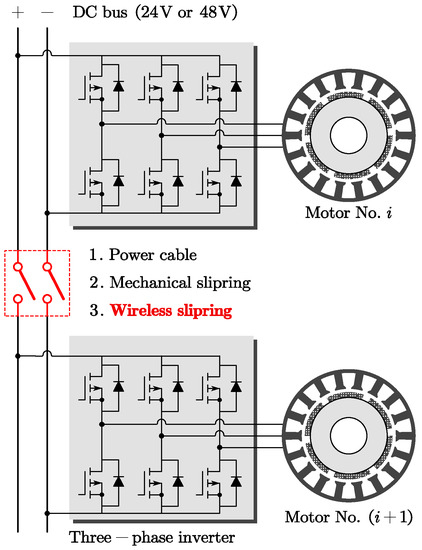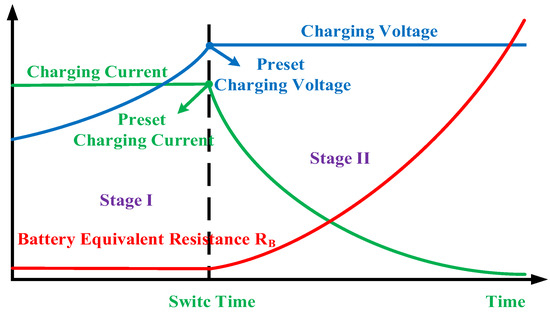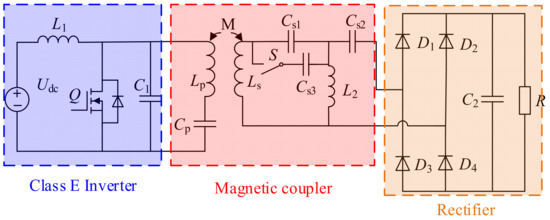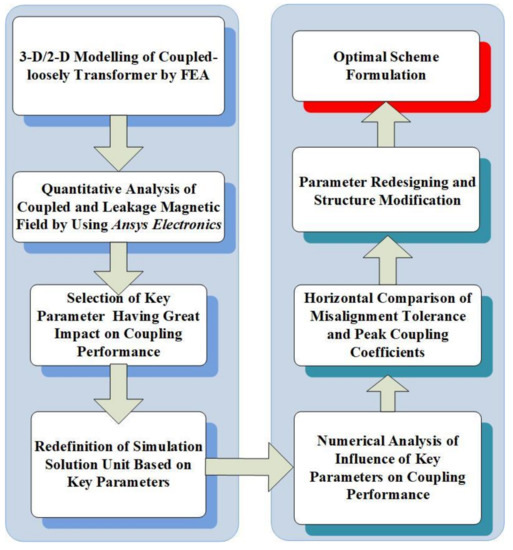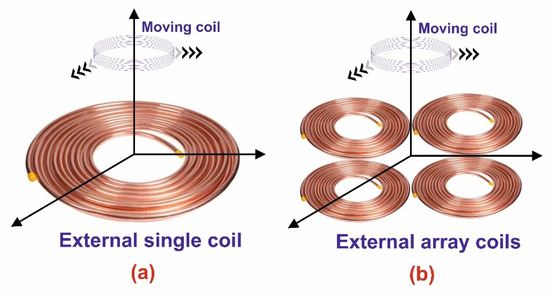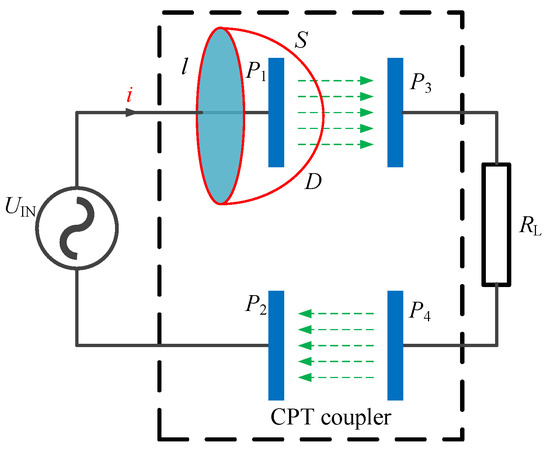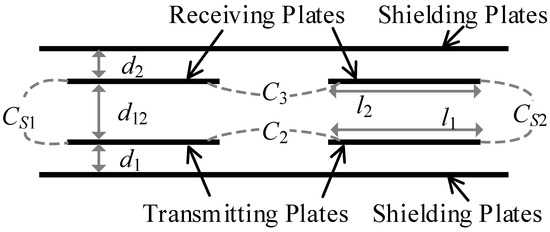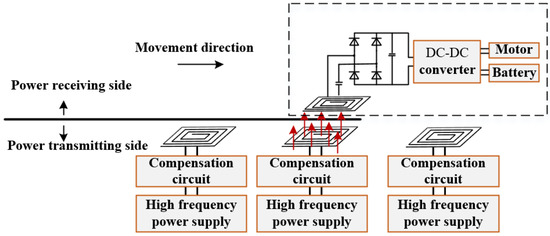Wireless Power Transfer: Material, Technologies, and Applications
(Closed)
Share This Topical Collection
Editors
 Dr. Qi Zhu
Dr. Qi Zhu
 Dr. Qi Zhu
Dr. Qi Zhu
E-Mail
Website
Guest Editor
Department of Electrical, Computer and Software Engineering, University of Auckland, Auckland, New Zealand
Interests: wireless power transfer; matrix converter; power electronics; renewable energy
Topical Collection Information
Dear Colleagues,
We would like to invite you to submit original research and review articles to a Special Issue of the journal Electronics on the topic of “Wireless Power Transfer: Material, Technologies, and Applications”.
In recent years, Wireless Power Transfer (WPT) technologies have found many successful applications in Medical Electronics, Consumer Electronics, Internet of Things (IoT), and Electric Vehicles (EV), etc. It is expected that WPT technologies will be widely applied in more commercial products. However, there are many practical challenges ahead to meet the safety and EMC requirements, particularly for long-distance power transfer at high operating frequencies. This Special Issue will include, but is not limited to, the following topics:
- Inductive Power Transfer (IPT) systems;
- Capacitive Power Transfer (CPT) systems;
- Radiative WPT systems;
- Energy harvesting;
- Ultrasonic power transfer, laser power transfer, infrared power transfer, etc.;
- Electromagnetic compatibility (EMC);
- Foreign object detection (FOD) and living object detection (LOD) technologies;
- Electromagnetic materials;
- Sensing and control of WPT systems;
- Practical design and productization of WPT systems.
Dr. Qi Zhu
Prof. Dr. Aiguo Patrick Hu
Guest Editors
Manuscript Submission Information
Manuscripts should be submitted online at www.mdpi.com by registering and logging in to this website. Once you are registered, click here to go to the submission form. Manuscripts can be submitted until the deadline. All submissions that pass pre-check are peer-reviewed. Accepted papers will be published continuously in the journal (as soon as accepted) and will be listed together on the collection website. Research articles, review articles as well as short communications are invited. For planned papers, a title and short abstract (about 100 words) can be sent to the Editorial Office for announcement on this website.
Submitted manuscripts should not have been published previously, nor be under consideration for publication elsewhere (except conference proceedings papers). All manuscripts are thoroughly refereed through a single-blind peer-review process. A guide for authors and other relevant information for submission of manuscripts is available on the Instructions for Authors page. Electronics is an international peer-reviewed open access semimonthly journal published by MDPI.
Please visit the Instructions for Authors page before submitting a manuscript.
The Article Processing Charge (APC) for publication in this open access journal is 2400 CHF (Swiss Francs).
Submitted papers should be well formatted and use good English. Authors may use MDPI's
English editing service prior to publication or during author revisions.
Keywords
- inductive power transfer
- capacitive power transfer
- ultrasonic power transfer
- laser power transfer
- infrared power transfer
- microwave power transfer
- energy harvesting
Published Papers (11 papers)
Open AccessArticle
Analysis and Design of a Dual-Frequency Capacitive Power Transfer System to Reduce Coupler Voltage Stress
by
Sen Yang, Yao Zhang, Yiming Zhang, Yongchao Wang, Zhulin Wang, Bo Luo and Ruikun Mai
Cited by 2 | Viewed by 1184
Abstract
In a capacitive power transfer (CPT) system, the coupling capacitance formed between the coupling plates is very small only in the pF or nF range, which leads to high voltage stress among the coupling plates during energy transmission, which increases the risk of
[...] Read more.
In a capacitive power transfer (CPT) system, the coupling capacitance formed between the coupling plates is very small only in the pF or nF range, which leads to high voltage stress among the coupling plates during energy transmission, which increases the risk of an electrical breakdown between the coupled plates. To solve this problem, a novel dual-frequency CPT system is proposed in this paper, which uses the “peak clipping” effect caused by the superposition of the fundamental wave and third harmonic wave to reduce the voltage stress of the coupled plates. Through the detailed analysis of the working principle of the CPT system, it is shown that the dual-frequency CPT system can indeed reduce the high voltage stress among the coupled plate to 84.3% of the equivalent single-frequency system and can also reduce the inverter conduction losses to 90%. A 200 W prototype is designed with the proposed scheme, and the experimental results confirm the correctness of the theoretical derivation.
Full article
►▼
Show Figures
Open AccessArticle
A Coaxial and Coplanar Wireless Slipring for Multi-Axis Robot Manipulators
by
Lin Chai, Chun Song and Jianghua Lu
Viewed by 1326
Abstract
This manuscript proposed a compact slipring based on inductive power transfer (IPT) technology for multi-axis robot manipulators. Compared with conventional solutions, the minimum axial length of the proposed magnetic coupling assembly in the IPT based slipring makes it possible to integrate in-robot joint
[...] Read more.
This manuscript proposed a compact slipring based on inductive power transfer (IPT) technology for multi-axis robot manipulators. Compared with conventional solutions, the minimum axial length of the proposed magnetic coupling assembly in the IPT based slipring makes it possible to integrate in-robot joint actuators (electrical motors) with high power and torque densities. Additionally, the voltage transfer characteristic of the wireless slipring system is investigated to provide stable and reliable output voltage in the presence of arbitrary motor speeds and load conditions. A 100-W slipring prototype is designed for a practical three-axis robot arm. The simulation and experimental results clearly verify the system feasibility and effectiveness. The maximum efficiency of 90.3% at an 800 kHz operating frequency is achieved.
Full article
►▼
Show Figures
Open AccessArticle
Design and Analysis of Magnetic Shielding Mechanism for Wireless Power Transfer System Based on Composite Materials
by
Xin Zhang, Rongmei Han, Fangzhou Li, Xuetong Pan and Zhiqi Chu
Cited by 5 | Viewed by 1760
Abstract
In a wireless power transfer (WPT) system, in order to reduce the leakage of the magnetic field in the space and to improve the transmission efficiency of the system, a magnetic shielding mechanism is usually added to the coupling coil. However, the commonly
[...] Read more.
In a wireless power transfer (WPT) system, in order to reduce the leakage of the magnetic field in the space and to improve the transmission efficiency of the system, a magnetic shielding mechanism is usually added to the coupling coil. However, the commonly used ferrite material has defects of brittleness, easy cracking, and a low saturation limit. Therefore, a novel magnetic shielding mechanism based on a quartz fiber and nanocrystalline reinforced resin matrix composite material was proposed, and epoxy resin and cross-laminate-splicing processes were used to improve the resistivity of the nanocrystalline material and to improve the eddy current loss. A discretized geometric model was designed for quartz fiber, and the effects of different shielding structures on the space magnetic field and the power loss were simulated and analyzed. In the experiment, a space magnetic field measurement system was built, and the transmission efficiency was analyzed. The results showed that the new magnetic shielding mechanism has a good shielding effect, can effectively suppress leakage of the magnetic field in space, reduce the weight, and improve the mechanical performance while also achieving a high transmission efficiency of 85.6%.
Full article
►▼
Show Figures
Open AccessArticle
Analysis and Design of an S/PS−Compensated WPT System with Constant Current and Constant Voltage Charging
by
Lin Yang, Zhi Geng, Shuai Jiang and Can Wang
Cited by 2 | Viewed by 1942
Abstract
In recent years, more and more scholars have paid attention to the research of wireless power transfer (WPT) technology, and have achieved a lot of results. In practical charging application, ensuring that the WPT system can achieve constant current and constant voltage output
[...] Read more.
In recent years, more and more scholars have paid attention to the research of wireless power transfer (WPT) technology, and have achieved a lot of results. In practical charging application, ensuring that the WPT system can achieve constant current and constant voltage output with zero phase angle (ZPA) operation is very important to prolong battery life and improve power transfer efficiency. This paper proposes an series/parallel series(S/PS)-compensated WPT system that can charge the battery load in constant current and constant voltage modes at two different frequency points through frequency switching. The proposed S/PS structure contains only three compensation capacitors, few compensation elements, simple structure, low economic cost, in addition, the secondary-side does not contain compensation inductor, ensuring the compactness of the secondary-side. An experimental prototype with an input voltage of 40 V is established, and the experiment proves that the model can obtain output voltage of 48 V and current of 2 A. Maximum system transmission efficiency of up to 92.48% The experimental results are consistent with the theoretical analysis results, which verifies the feasibility of the method.
Full article
►▼
Show Figures
Open AccessArticle
A Switched Capacitor-Based Single Switch Circuit with Load-Independent Output for Wireless Power Transfer
by
Bo Pan, Houji Li, Yong Wang and Jianqiang Li
Cited by 1 | Viewed by 1440
Abstract
Double-sided Inductor–Capacitor–Capacitor (LCC) or hybrid compensation network is often used in the traditional methods to realize load-independent output in wireless power transfer; however, these methods require the changes of operating frequency or compensation network, and the adoption of more switches and components, resulting
[...] Read more.
Double-sided Inductor–Capacitor–Capacitor (LCC) or hybrid compensation network is often used in the traditional methods to realize load-independent output in wireless power transfer; however, these methods require the changes of operating frequency or compensation network, and the adoption of more switches and components, resulting in the reduction in the reliability of the system. In this article, a single switch topology using a switched capacitor was proposed, which can realize load-independent output characteristics by only switching the branch once, characterized by the strength of fewer components, simple control, and high reliability. The analysis of this topology and the accurate parameter design method were given, and the sensitivity analysis was also carried out. Finally, a 180 W wireless charging prototype with 60 V/3 A was built using the proposed topology, which confirmed the accuracy of model analysis and the practical feasibility of the proposed strategies.
Full article
►▼
Show Figures
Open AccessReview
A Review of Wireless Power Transfer Systems for Electric Vehicle Battery Charging with a Focus on Inductive Coupling
by
Iman Okasili, Ahmad Elkhateb and Timothy Littler
Cited by 30 | Viewed by 8422
Abstract
This article classifies, describes, and critically compares different compensation schemes, converter topologies, control methods, and coil structures of wireless power transfer systems for electric vehicle battery charging, focusing on inductive power transfer. It outlines a path from the conception of the technology to
[...] Read more.
This article classifies, describes, and critically compares different compensation schemes, converter topologies, control methods, and coil structures of wireless power transfer systems for electric vehicle battery charging, focusing on inductive power transfer. It outlines a path from the conception of the technology to the modern and cutting edge of the technology. First, the base principles of inductive coupling power transfer are supplied to give an appreciation for the operation and design of the systems. Then, compensation topologies and soft-switching techniques are introduced. Reimagined converter layouts that deviate from the typical power electronics topologies are introduced. Control methods are detailed alongside topologies, and the generalities of control are also included. The paper then addresses other essential aspects of wireless power transfer systems such as coil design, infrastructure, cost, and safety standards to give a broader context for the technology. Discussions and recommendations are also provided. This paper aims to explain the technology, its modern advancements, and its importance. With the need for electrification mounting and the automotive industry being at the forefront of concern, recent advances in wireless power transfer will inevitably play an essential role in the coming years to propel electric vehicles into the common mode of choice.
Full article
►▼
Show Figures
Open AccessArticle
Structural Analysis of Loosely Coupled Transformers with FEA-Aided Visualization for Wireless Power Transfer Systems against Misalignment Tolerance
by
Yao Zhang, Jiayang Li, Fan Zhang, Zhangping Chen, Yaguang Kong and Na Huang
Cited by 1 | Viewed by 1627
Abstract
The main problems of automotive wireless power transmission (WPT) systems include a weak misalignment tolerance are urgently required to be solved through the design of the loosely coupled transformer. In this paper, an analysis methodology based on finite element analysis (FEA) visualization is
[...] Read more.
The main problems of automotive wireless power transmission (WPT) systems include a weak misalignment tolerance are urgently required to be solved through the design of the loosely coupled transformer. In this paper, an analysis methodology based on finite element analysis (FEA) visualization is proposed, it is easy-implemented and straightforwardly explains this complex electromagnetic phenomenon. Firstly, the transformer structures with different winding and magnetic core arrangement were modeled by FEA in both 3-D and 2-D visualizations. The distribution of space coupling magnetic fields and leakage fields was analyzed by
ANSYS Electronics. The key parameters that have a great influence on the coupling performance were delicately chosen. Then, the quantitative analysis of these key parameters and coupling performance against misalignment tolerance is presented. The numerical statistical result shows that the maximum coupling coefficient of the three structures that have been optimized consistently appears when the two key parameters, the inner and outer diameter, account for about 20% and 60% of the whole dimension of the transformers. A new transformer with a solenoid-shaped structure and strong misalignment tolerance was proposed based on the analysis methodology and the FEA results of the three structures. The delivered power and transfer efficiency under different misalignments of the new structure were analyzed via an FEA-aided joint method as well. The relationships among misalignment tolerance, key structural dimensions and coupling coefficients for all these structures were comprehensively investigated, which provide guidance for the subsequent multi-objective optimization strategies.
Full article
►▼
Show Figures
Open AccessArticle
Using Overlapped Resonators in Wireless Power Transfer for Uniform Electromagnetic Field and Removing Blank Spots in Free Moving Applications
by
Saeideh Pahlavan, Mostafa Shooshtari, Mohammadreza Maleki and Shahin Jafarabadi Ashtiani
Cited by 11 | Viewed by 2397
Abstract
We propose an induction link based on overlapping arrays to eliminate blank spots on the electromagnetic field for moving object applications. We use two arrays of four aligned coils that have a 50% overlap between the two plates. This mechanism compensates for the
[...] Read more.
We propose an induction link based on overlapping arrays to eliminate blank spots on the electromagnetic field for moving object applications. We use two arrays of four aligned coils that have a 50% overlap between the two plates. This mechanism compensates for the internal coil power drop at positions in the boundaries between two adjacent external coils. We showed that if these plates are excited, a uniform electromagnetic field is created in the movement direction of the moving object. This uniform electromagnetic field distribution will result in a constant receiving power at all points in the path of the moving internal coil with the same power consumption of one coil excitation. Power delivery to the moving object tolerance reaches 10% at most, while, in non-overlapped scenarios, it is approximately 50%. In addition, according to the theoretical calculations, printed circuit coils (PCB) for the array are designed for maximum efficiency. We found that the change in distance and dimensions of the receiver coil has a linear effect on power and efficiency. Moreover, a Specific Absorption Rate (SAR) simulation was performed for biocompatibility. In this paper, we investigate and record a 68% electrical power efficiency for the fabricated system. The array consists of eight transmitters coils of the same size and shape and a receiver coil at a distance of 4 cm. Furthermore, the fabricated coil has shown improved efficiency compared to similar studies in the literature and introduces a promising structure for bio-test applications.
Full article
►▼
Show Figures
Open AccessReview
Research and Application of Capacitive Power Transfer System: A Review
by
Zhulin Wang, Yiming Zhang, Xinghong He, Bo Luo and Ruikun Mai
Cited by 19 | Viewed by 5550
Abstract
Capacitive power transfer (CPT) uses an electric field as the transfer medium to achieve wireless power transfer (WPT). Benefitting from the low eddy current loss, simple system structure and strong plasticity of the coupling coupler, the CPT system has recently gained much attention.
[...] Read more.
Capacitive power transfer (CPT) uses an electric field as the transfer medium to achieve wireless power transfer (WPT). Benefitting from the low eddy current loss, simple system structure and strong plasticity of the coupling coupler, the CPT system has recently gained much attention. The CPT system has significantly improved transfer power, system efficiency, and transfer distance due to continuous research and discussion worldwide. This review briefly presents the basic working principle of the CPT system and summarizes the theoretical research in four aspects, including coupling coupler and high-frequency power converter. Following this, the review focuses on research in six key directions, including system modelling and efficiency optimization. The application of CPT technology in five fields, including medical devices and transportation, is also discussed. This review introduces the progress of CPT research in recent years, hoping to serve as a reference for researchers, to promote the further research and application of the CPT system.
Full article
►▼
Show Figures
Open AccessArticle
A General Parameter Optimization Method for a Capacitive Power Transfer System with an Asymmetrical Structure
by
Jinglin Xia, Xinmei Yuan, Sizhao Lu, Weiju Dai, Tong Li, Jun Li and Siqi Li
Cited by 2 | Viewed by 1581
Abstract
Capacitive power transfer (CPT) is an attractive wireless power transfer (WPT) technology and it has been widely studied in many applications. Symmetrical structures and high-order compensation networks are always produced as optimization results and common configurations for high-efficiency CPT systems. However, in space-limited
[...] Read more.
Capacitive power transfer (CPT) is an attractive wireless power transfer (WPT) technology and it has been widely studied in many applications. Symmetrical structures and high-order compensation networks are always produced as optimization results and common configurations for high-efficiency CPT systems. However, in space-limited scenarios, an asymmetric structure tends to be a better choice. The related large number of high-order asymmetric system parameters is a key problem in parameter design. In this study, a general parameter design method that is based on reactive power optimization is proposed for an electric field resonance-based CPT system with an asymmetric six-plate coupler. The reactive power in the compensation network was analyzed and optimized under the constraint of transferred power. With equal reactive power, the optimization complexity was significantly reduced and the optimized system parameters were provided. To validate the effectiveness of the proposed method, a 1 MHz, 3.2 kW asymmetric CPT protype with 100 mm gap distance was implemented. The results indicate that, with the optimized parameters, high system efficiency can be achieved when the system’s volume is reduced. At the rated power, about 95% DC–DC overall efficiency was achieved through a 6-pF coupling capacitor.
Full article
►▼
Show Figures
Open AccessArticle
Collaborative Optimization Method of Power and Efficiency for LCC-S Wireless Power Transmission System
by
Ming Xue, Qingxin Yang, Chunzhi Li, Pengcheng Zhang, Shuting Ma and Xin Zhang
Cited by 3 | Viewed by 1782
Abstract
Dynamic wireless charging enables moving equipment such as electric vehicles, robots to be charged in motion, and thus is a research hotspot. The applications in practice, however, suffer from mutual inductance fluctuation due to unavoidable environmental disturbances. In addition, the load also changes
[...] Read more.
Dynamic wireless charging enables moving equipment such as electric vehicles, robots to be charged in motion, and thus is a research hotspot. The applications in practice, however, suffer from mutual inductance fluctuation due to unavoidable environmental disturbances. In addition, the load also changes during operation, which makes the problem more complicated. This paper analyzes the impacts of equivalent load and mutual inductances variation over the system by LCC-S topology modeling utilizing two-port theory. The optimal load expression is derived. Moreover, a double-sided control strategy enabling optimal efficiency and power adjustment is proposed. Voltage conducting angles on the inverter and rectifier are introduced. The simulation and experimental results verify the proposed method.
Full article
►▼
Show Figures







